A distinct group of grey whales that feeds off the coast of British Columbia and are a candidate for endangered species status have seen their average adult body length shrink 13 per cent in the past two decades, a new study has found.
The research, published in the journal Global Change Biology last week, involved flying drones off the coast of Oregon to capture subtle physiological changes in the niche grey whale feeding group, which stretches from northern California to Vancouver Island.
The findings offer a warning for the species and the latest signal that large animals across the world’s oceans are getting smaller — possibly in response to climate change and human activities — said K.C. Bierlich, assistant professor at Oregon State University’s Marine Mammal Institute and a co-author on the study.
“The fact that they've declined so drastically since 20, 25 years ago is a huge red flag,” said Bierlich. “It just kind of adds to the evidence across the planet that animals are getting smaller.”
Hunted to extirpation in the North Atlantic hundreds years ago, in the North Pacific, grey whales persisted. By 2018, the population had bounced back from a legacy of whaling to number 25,000 individuals.
Wintering off the coast of Baja California to breed, in the summer, most of the whales migrate north to feed in Arctic waters as far as the Northwest Territories.
But in 2019, signs started to emerge that something in that seasonal rhythm had gone wrong. Over the next four years, more than 600 grey whales turned up dead, their up to 14-metre carcasses rotting on the beaches of Canada, the United States and Mexico. Thousands more are thought to have died and sunk at sea.
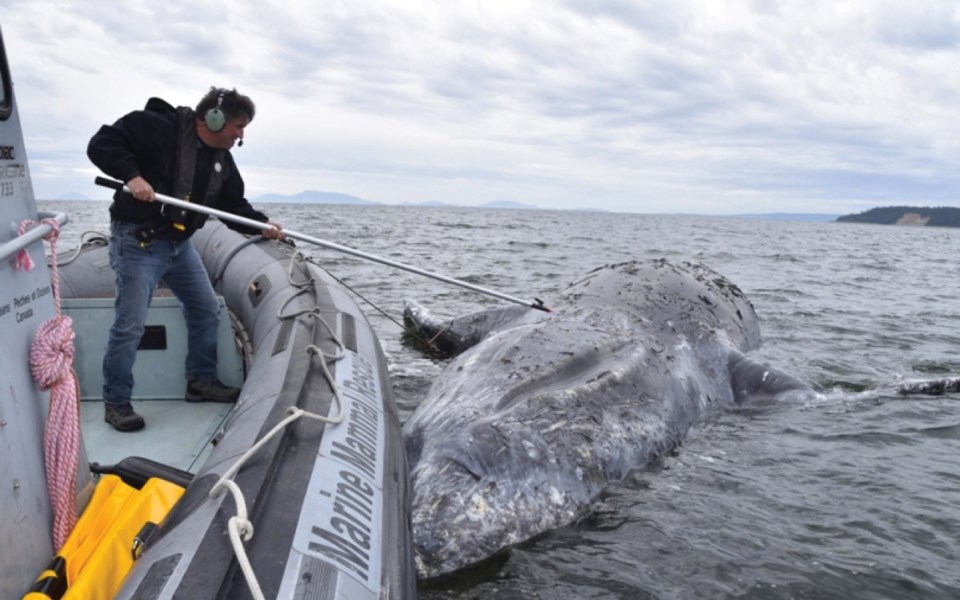
By 2023, scientists estimate the grey whale population sunk to around 15,500, a nearly 40 per cent drop from just four years earlier.
The die-off was unexpected, said Thomas Doniol-Valcroze, head of the Cetacean Research Program at Fisheries and Oceans Canada’s Pacific Biological Station in Nanaimo, B.C.
“This is a population of whales that has overall recovered fairly well from the whaling era. People were thinking, we're on our way to a full recovery,” said Doniol-Valcroze, who was not involved in the latest study.
Amid the die-off, researchers in the U.S. and Canada began to see an odd signal. A small subgroup of the whales weren’t dying at the same rate. But they were getting skinnier.
Odd whales out
Numbering 212 individuals, the Pacific coast feeding group is not genetically unique, but it was always a bit odd. Instead of going all the way to the Arctic, they tended to make a shorter trip, mothers bringing their young to preferred shallow-water feeding grounds off Northern California, Oregon, Washington and British Columbia.
Arctic feeding whales tend to eat crustaceans that live in the sand and mud on the ocean floor. The coastal feeding group, on the other hand, tended to favour shallow kelp forests and rocky reefs where they could hoover up crab larvae and tiny mysid shrimp near the surface.
“You can literally stand on the cliffs and look down and see a grey whale feeding right there, which is kind of unheard of for such a large baleen whale,” said Bierlich.
Feeding through ocean currents, the whales sometimes stay in place by floating vertically, head down, using a pectoral fin to spin in place. It’s as if they were a child doing a headstand at the bottom of a pool, said the researcher.
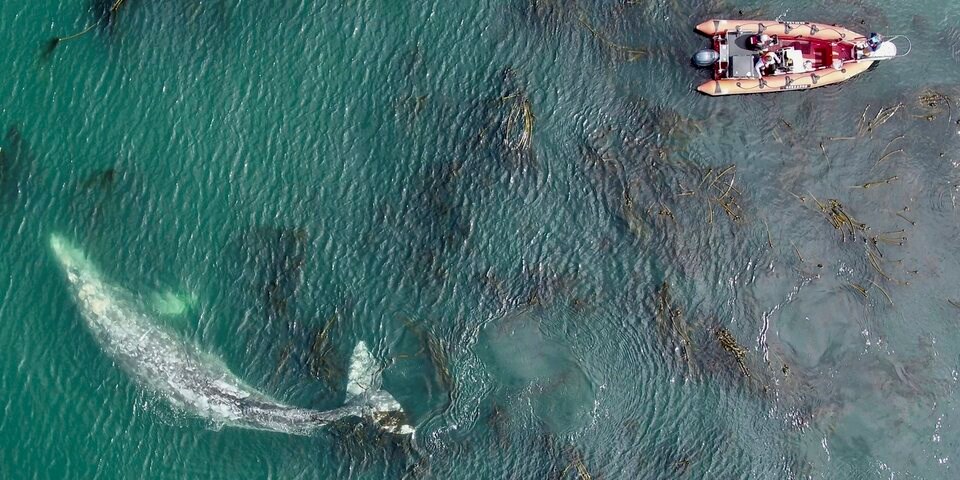
Sometimes, the whales will approach a zodiac of scientists friendly and curious; other times, they’ll go off on their own for long periods, only to check in with other whales weeks later.
“I think they each have their own personality,” Bierlich said. “They actually might be interacting on a different level than what we're used to.”
Observing the whales has raised serious questions around the impact of human industry on the coast. Bierlich says studies have shown a lot of grey whales are ingesting plastics, while constantly facing threats from underwater noise, entanglement with fishing gear and collisions with boats.
“Last week, I blew over a dead whale that was entangled in a bunch of crab pots,” he said. “We think it was a calf.”
As a researcher focused on how an animal’s shape is influenced by its environment, Bierlich regularly had a bird's-eye view of the whales as they moved around. Analyzing the footage, he was struck by the way the whales' heads and flukes appeared to be getting smaller.
A few years ago, he remembers asking himself: is it a sign there’s not enough food? Are they healthy?
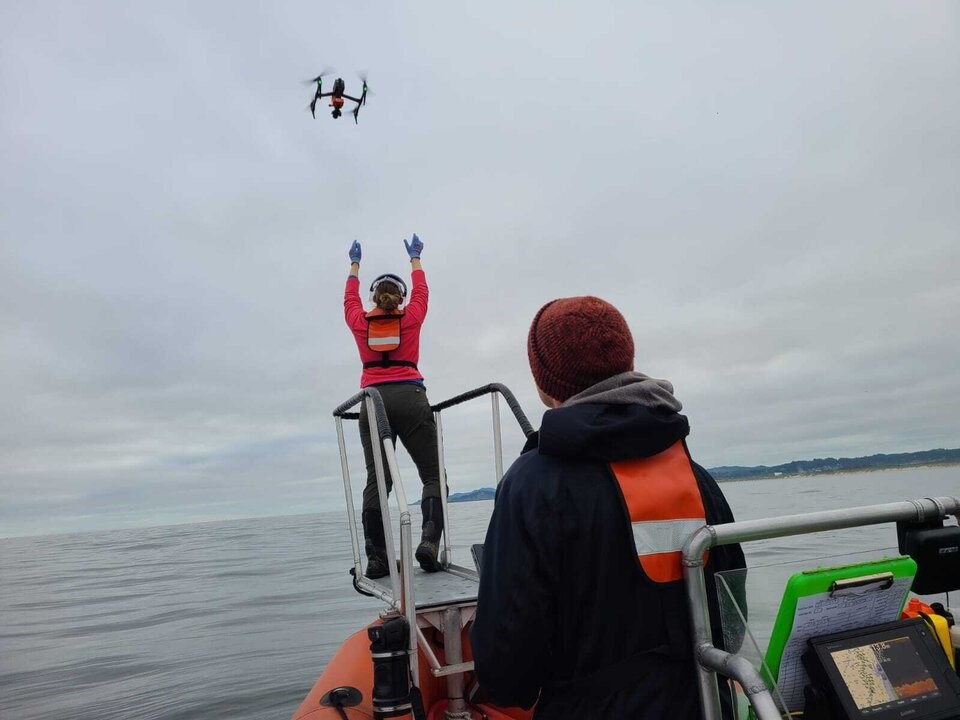
'A very strong' shrinking signal
A good grey whale feeding ground requires a patch of ocean where deep water upwelling brings cool, nutrient-rich water to the surface. Those nutrients attract an array of smaller organisms like plankton, which in turn, act as food for mysid shrimp.
But for the whales to take advantage of those cold upwelling events, they need to be interspersed with moments of ocean “relaxation” so nutrients can sit in the water column and spur a proliferation of sea life.
“There's a sweet spot,” Bierlich said. “That basically creates a lot of food for other fish and birds and grey whales.”
The researchers found that in the 10 years prior to a calf’s birth, that sweet spot had slipped. Without enough prey, mothers of the coastal feeding group couldn’t build up their fat reserves to properly support their offspring with milk. A similar lack of food could stunt the calves once they are weaned, added Bierlich.
From the sky, the researchers piloted drones, and image by image, began to build visual growth charts for 130 whales. By comparing the growth curve of adults with the younger whales of today, they could understand how they were keeping up with previous generations and estimate how big they would be when they finally reached adulthood.

The evidence pointed to a startling trend: on average, a whale born in 2020 is expected to reach an adult body length 1.65 metres shorter than one born before 2000, the study found. The 13 per cent decline is equivalent to the average five-foot-four Canadian woman shrinking down to four-foot-eight over two decades.
“It’s a surprise that animals like this — not fish, but you know large long-lived whales — can respond that strongly to just a fairly small change in environmental conditions,” said Doniol-Valcroze.
“It's a kind of metric that I thought you can see evolve in response to conditions over a much longer time frame.”
While quite convincing, Doniol-Valcroze said the study is using young whale growth patterns to predict adult size. He said the authors acknowledged the whales still could still catch up if ocean conditions improve.
“Usually, that's not what happens. Usually, you're kind of stuck on your trajectory, and those early years are pivotal,” he said. “If the signal holds, it’s a very strong signal.”
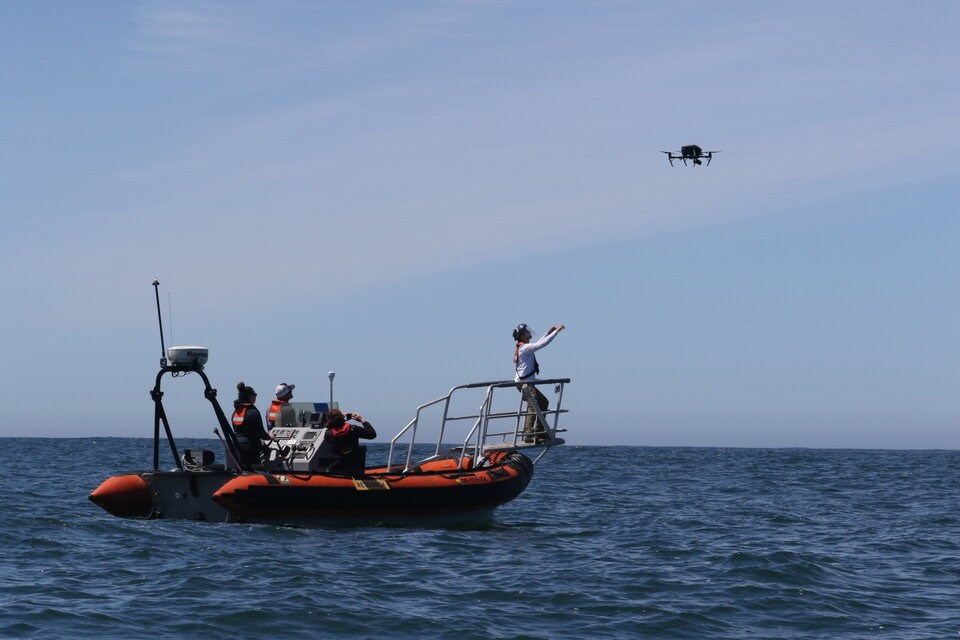
Brink of a new endangered species
The research out of Oregon comes as scientists and policymakers are upending what they think they knew about grey whales.
For years, the resident grey whales off B.C.’s coast weren’t considered a priority, but part of the larger abundant group of migratory grey whales. But as scientists learn more about the coastal feeding group, the Canadian government appears poised to protect them.
In 2017, the Committee on the status of Endangered Wildlife in Canada kicked off a reassessment of the whale. In 2021, Doniol-Valcroze co-authored a potential recovery assessment of the Pacific coast feeding group in B.C. That work has since been used in consultations over whether government should declare the whale endangered.
“The managers have made their recommendations to the minister, and I think now we're just waiting for a final decision on the part of the government,” he said. “It could happen as early as this year.”
Such political decisions are out of the hands of scientists like Bierlich and Doniol-Valcroze. Both said their focus is to get out in the field and learn from one another.
Federal research scientists in Canada are slightly behind their U.S. counterparts, but Doniol-Valcroze said they are trying to learn from the Oregon-based team to apply similar drone research methods off the coast of Vancouver Island.
And as research teams in Washington and B.C. get more drones in the air, Bierlich said he will be able to confirm or dispel a lot of what he’s documenting.
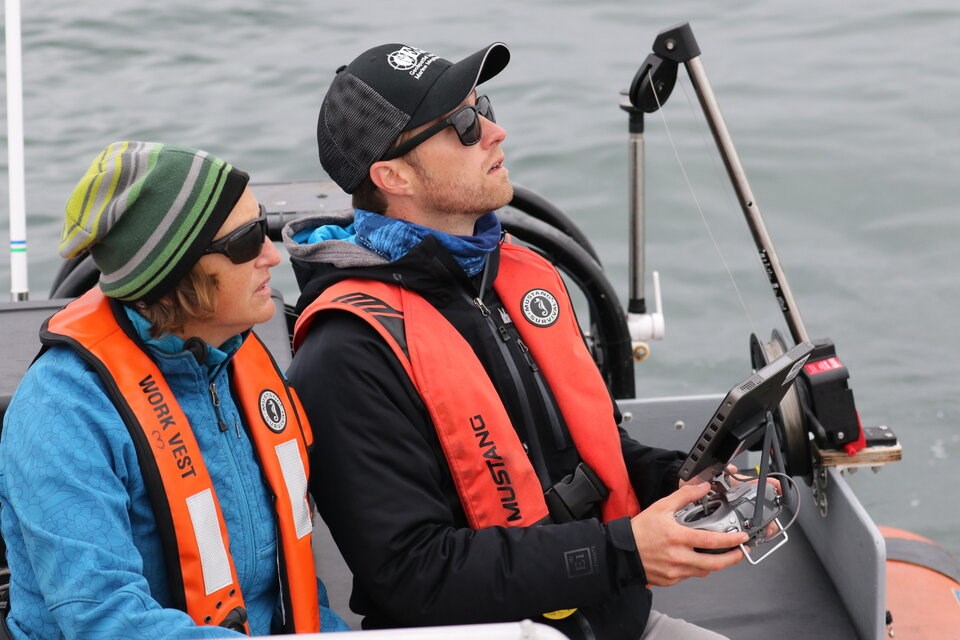
Sentinels in a changing ocean
A lot of questions remain unanswered. Bierlich said his next priority is to monitor the species in its Mexican breeding grounds to better understand the repercussions of shrinking whales. One of his biggest concerns: does their smaller size offer an early warning sign they have hit a physiological wall and won’t be able to reproduce?
“Because if it is, that's a serious problem. If it isn't, then maybe they've just adapted to be smaller,” said Bierlich.
Those answers couldn’t come soon enough. Whales are considered sentinels of the ocean — they eat and poop a lot, making them powerful "nutrient cyclers" that fertilize the sea to support more life.

The health of a single whale as it migrates from Mexico to Canada can tell scientists about the health of the whole population, and as a top predator, the wider ecosystem itself, added Bierlich. A changing climate means a rapidly changing ocean that few living whales have encountered.
“There might have been more of a cyclical pattern at some point. But we're getting away from that,” said Bierlich. “We're entering new territory.”
B.C. grey whales shrinking fast, finds study - Burnaby Now
Read More
No comments:
Post a Comment